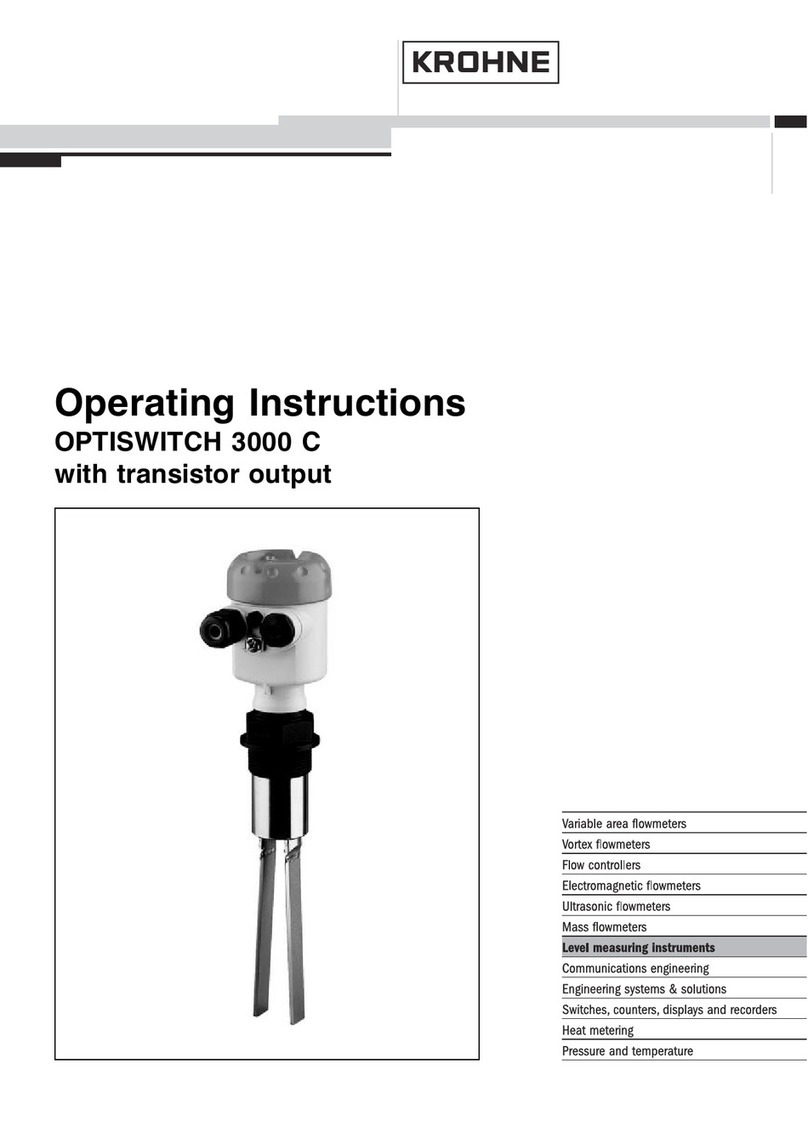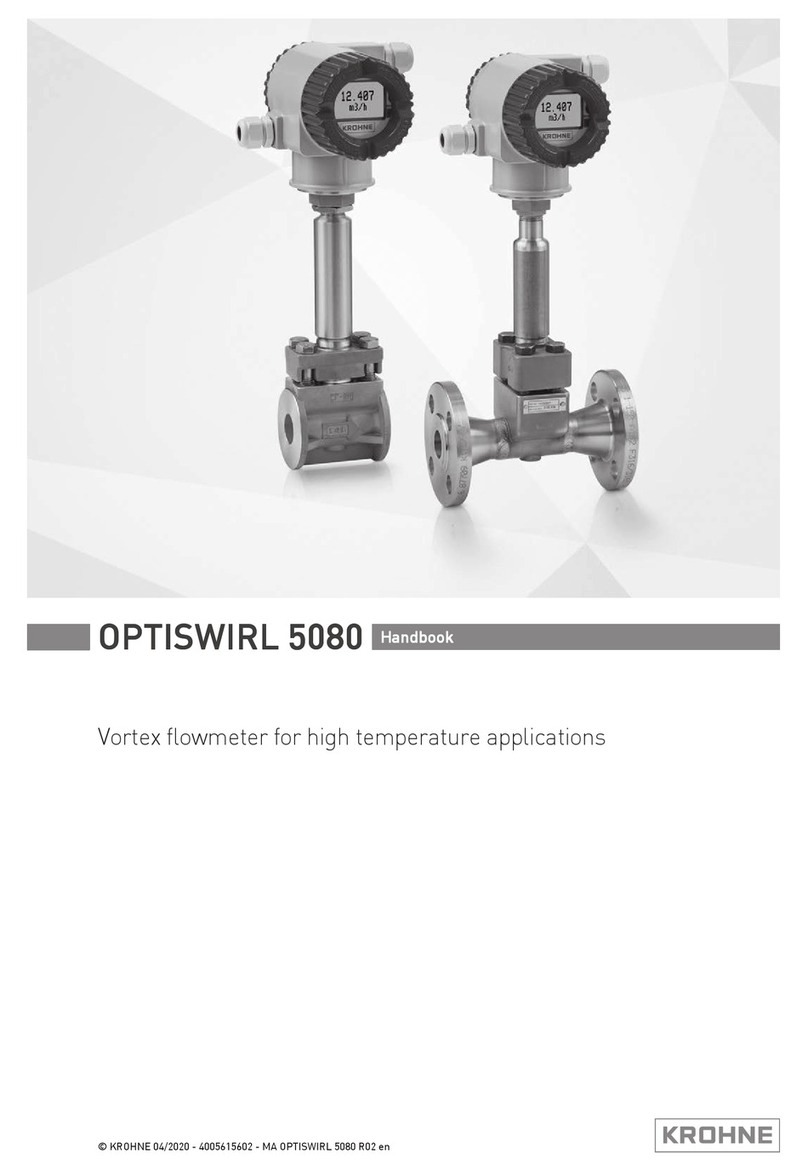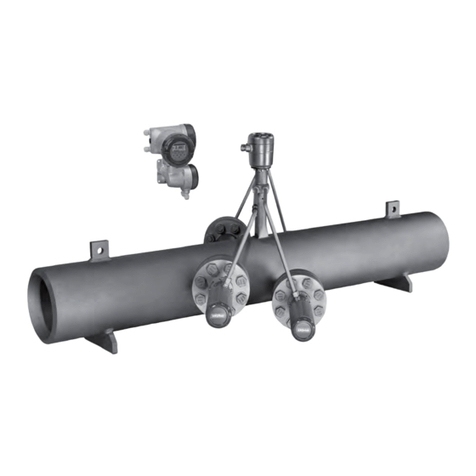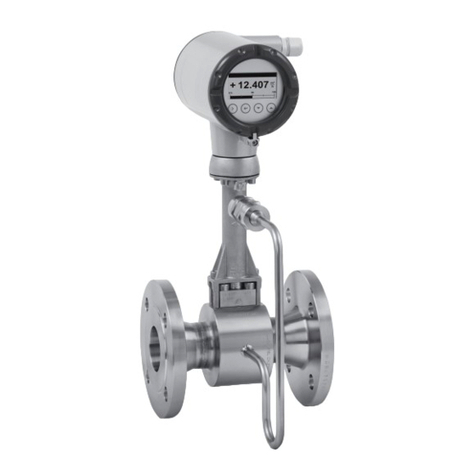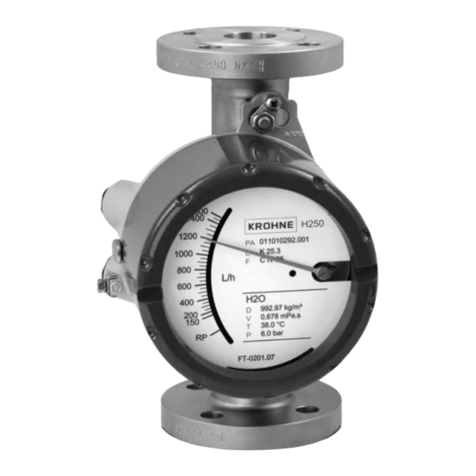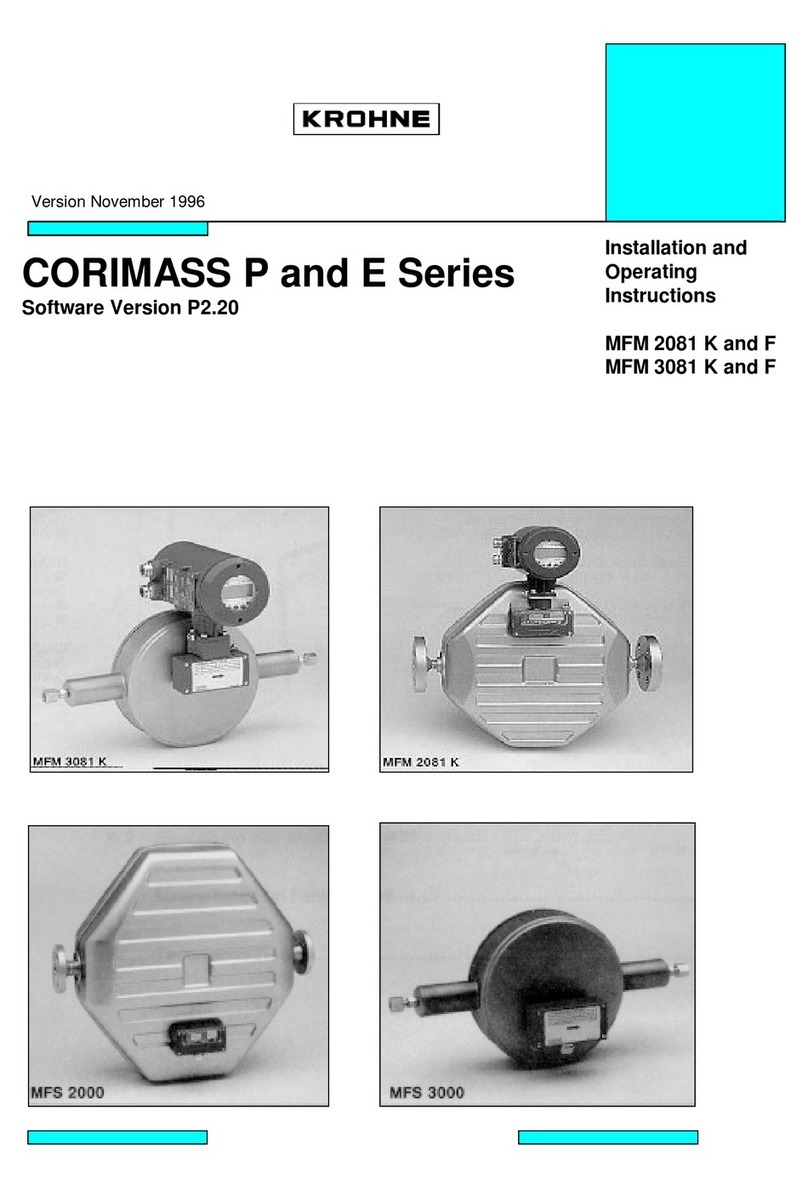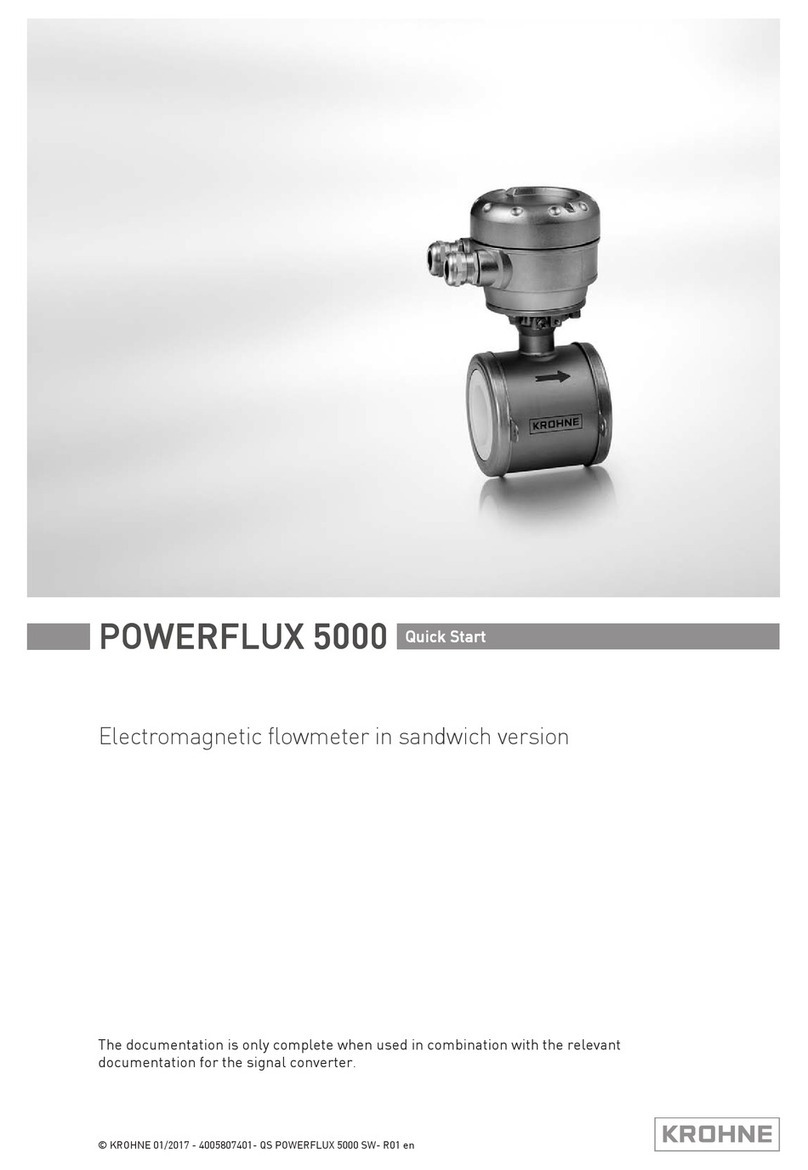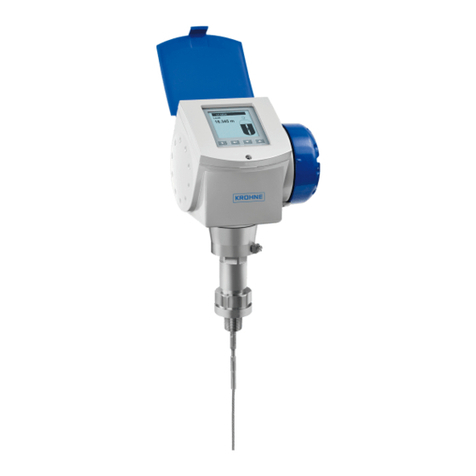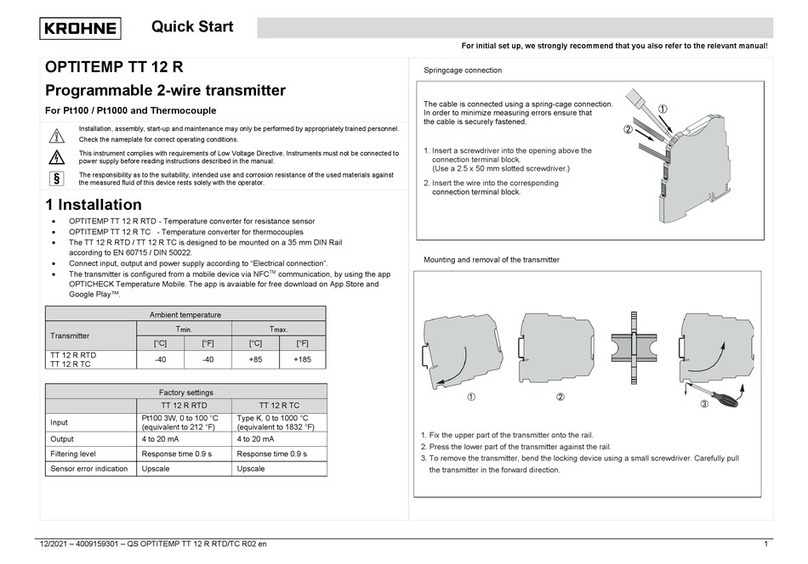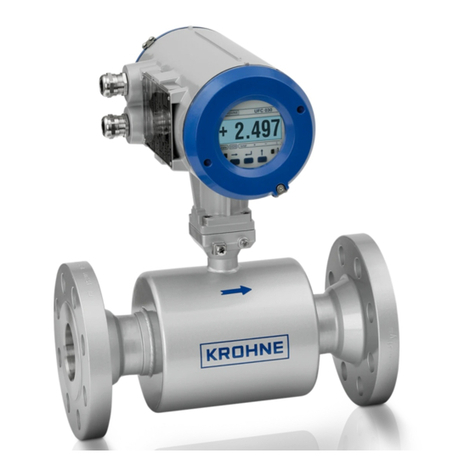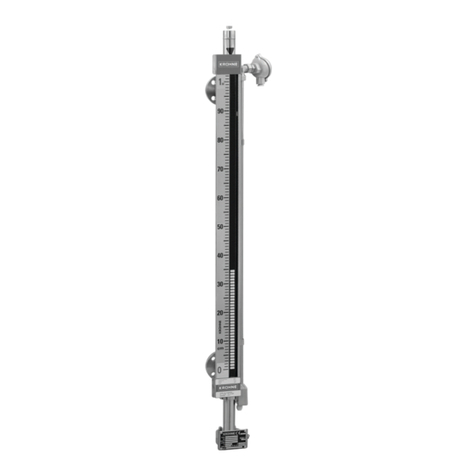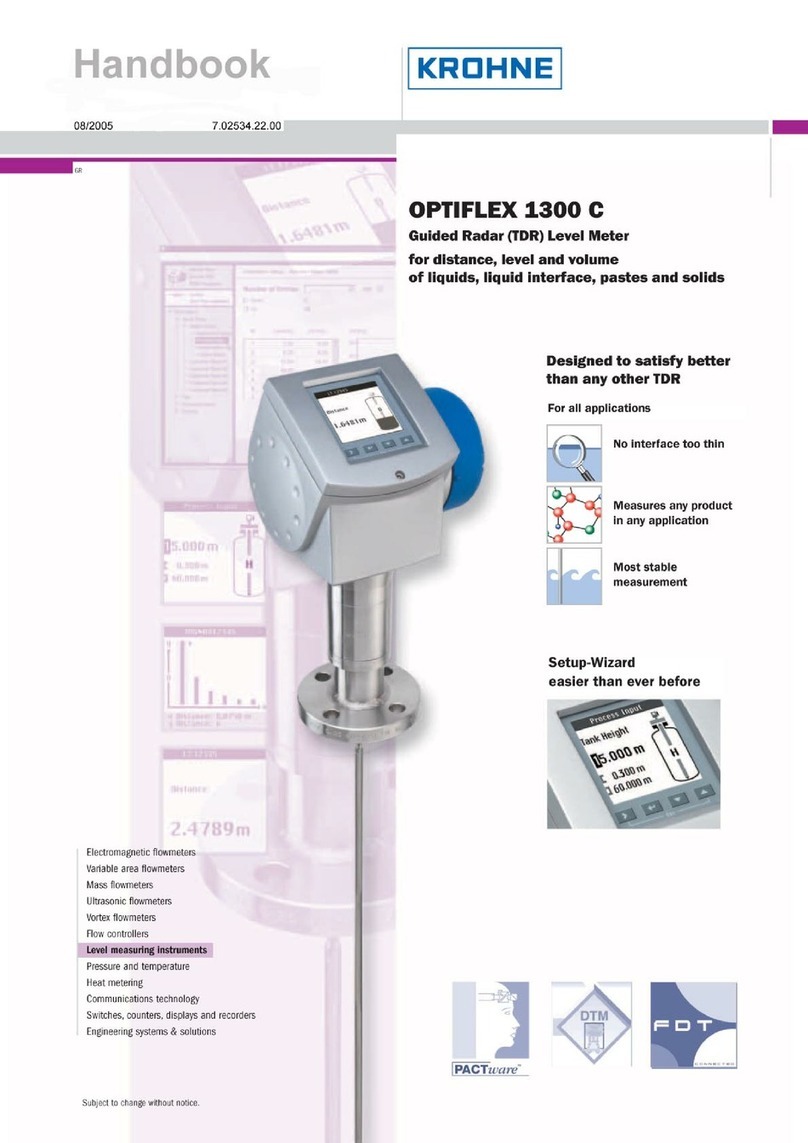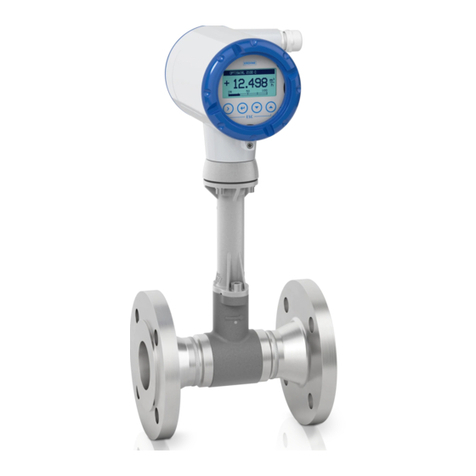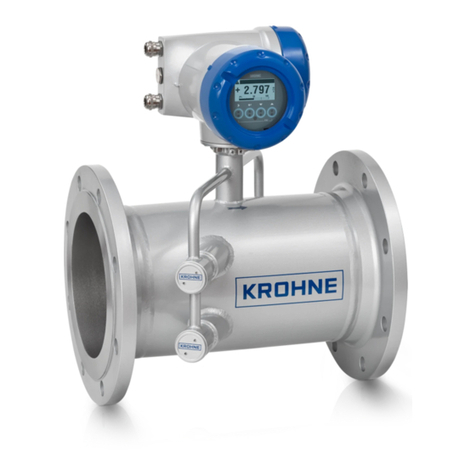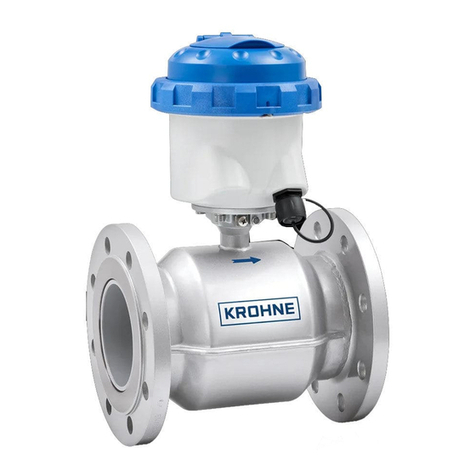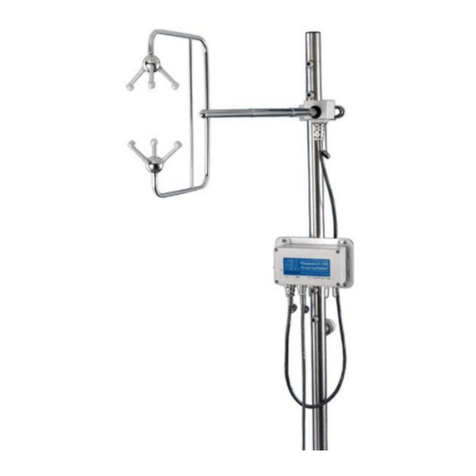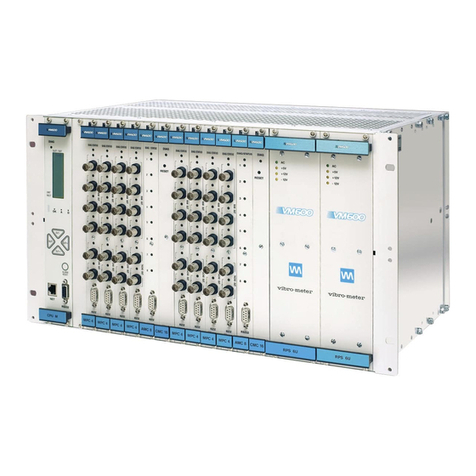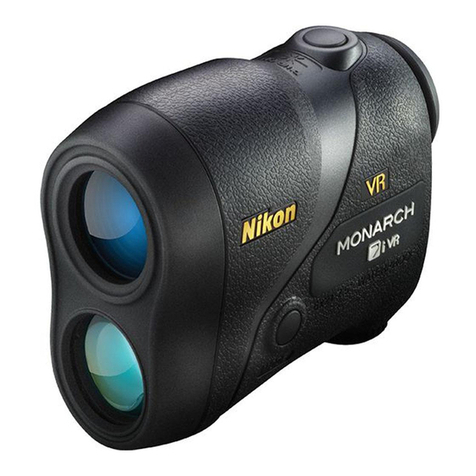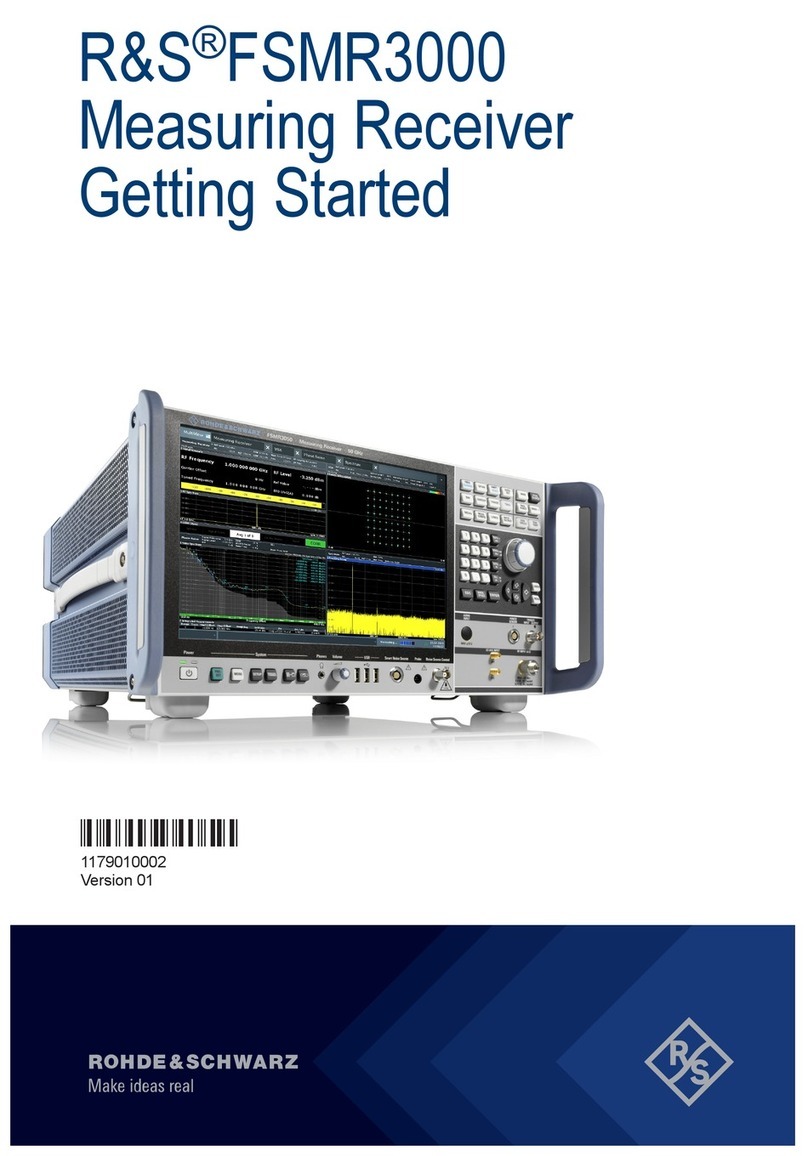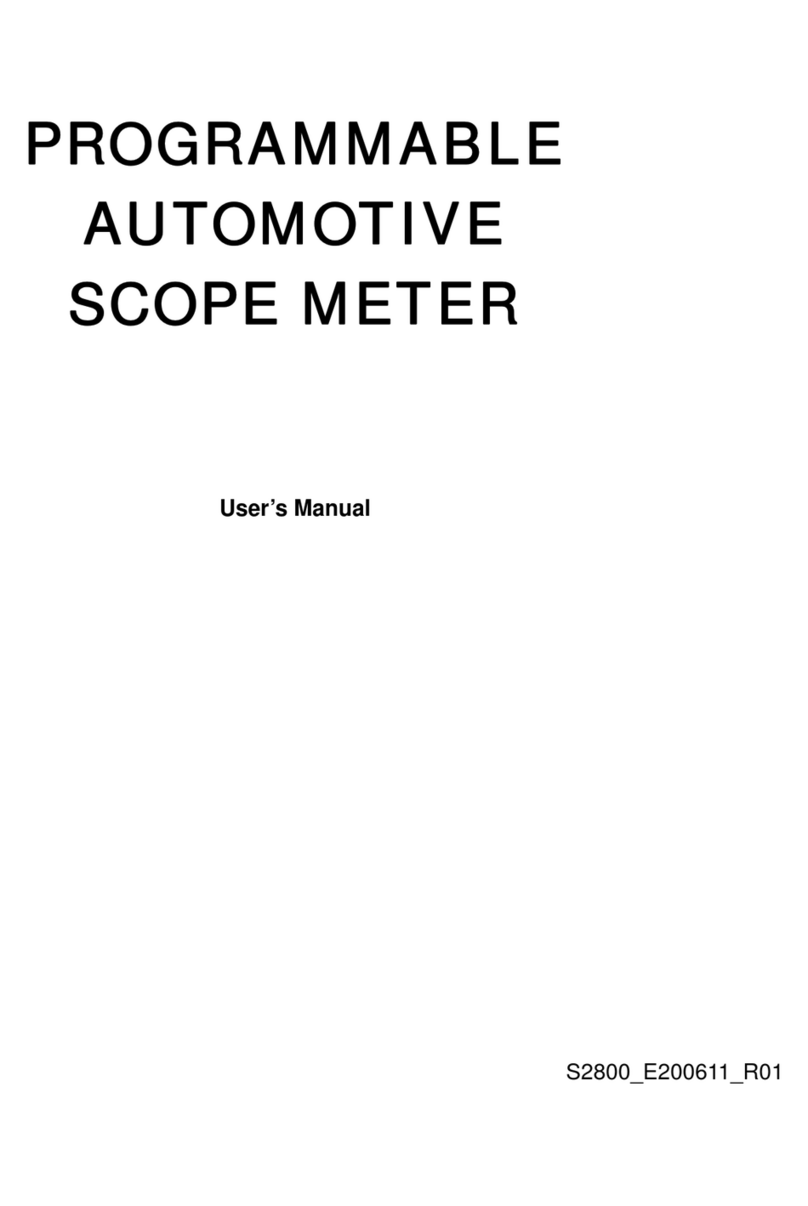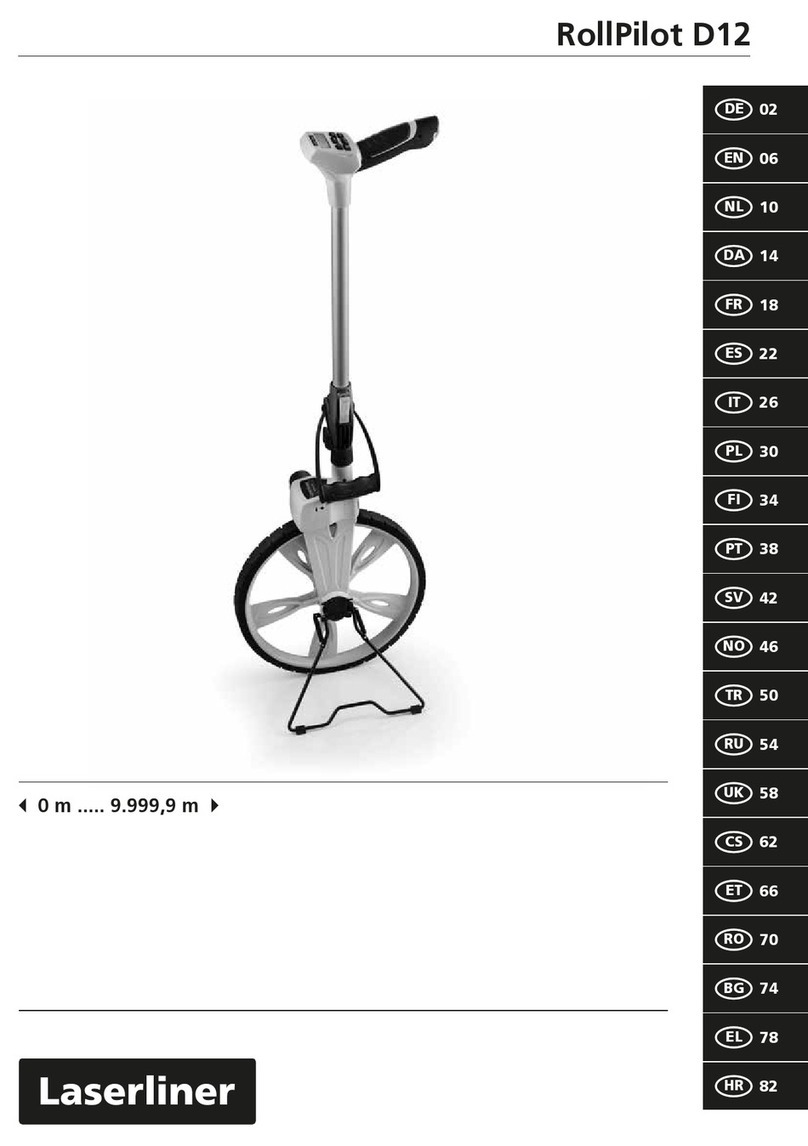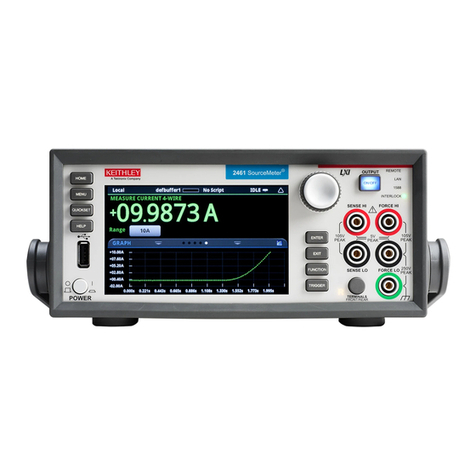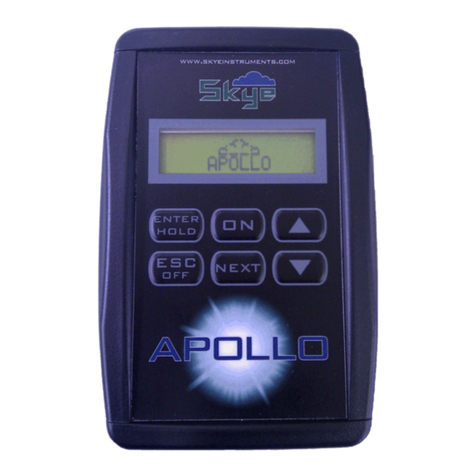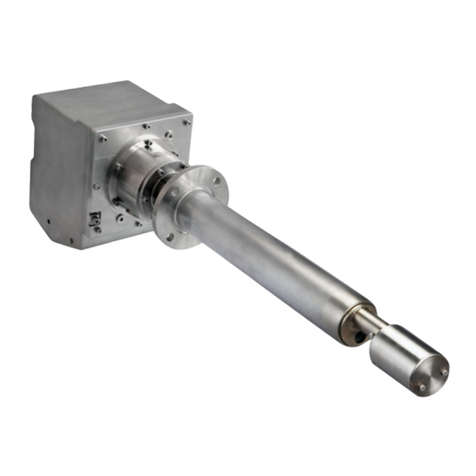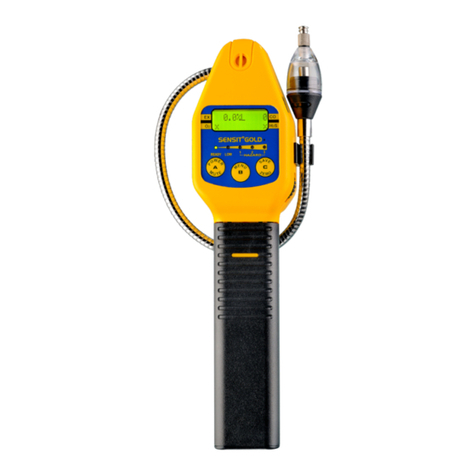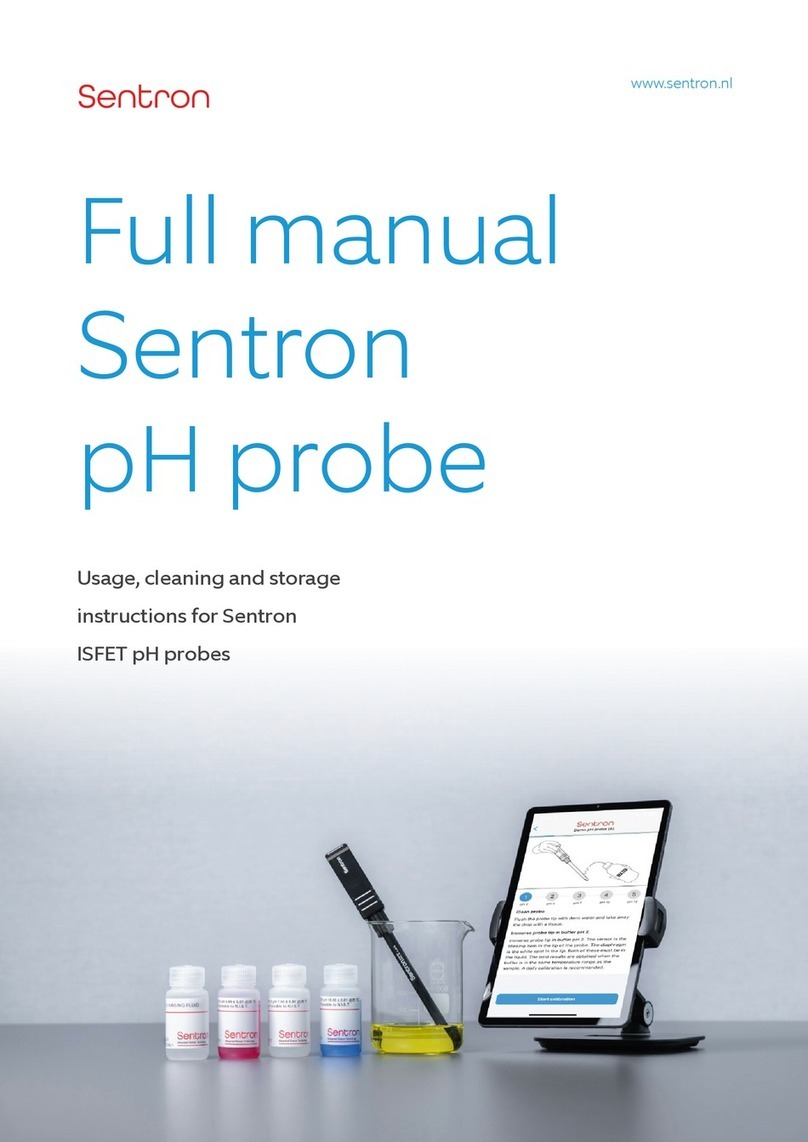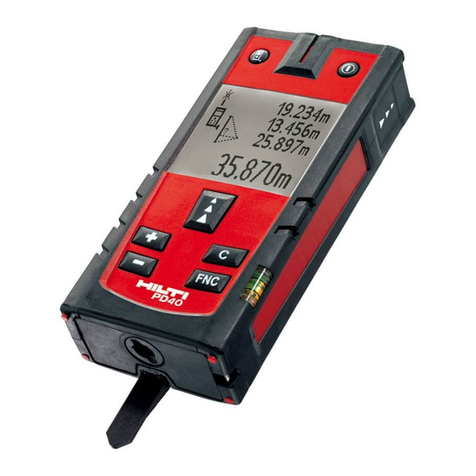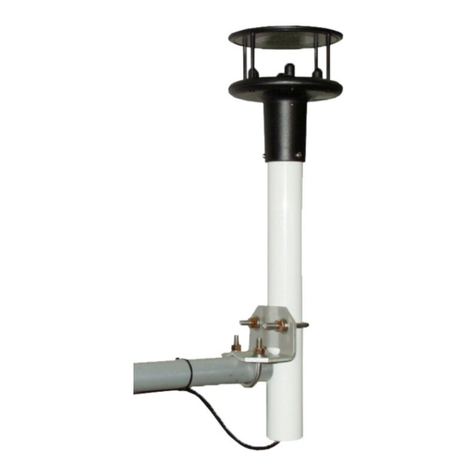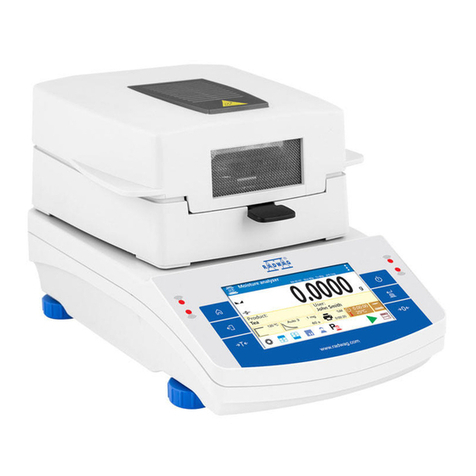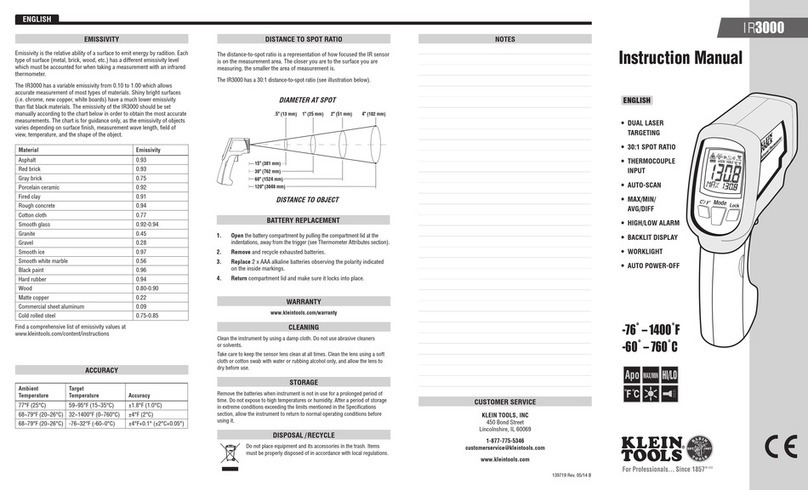
5
OPERATION
14
GA24
www.krohne.com 10/2020 - 4000836703 - AD GA24 Exia Gb R04 en
5.1 Start-up
Make the following checks before starting up the device:
•Suitability of the materials used for the measuring unit and for the gaskets for adequate
resistance to corrosion from the product.
•Correct connection of the built-in electrical equipment for the electrical variant.
•Fit of the mounting elements of the limit switches.
•Electrostatic grounding of the device.
5.2 Operation
Adjusting the limit switch during operation is permitted.
To do this, loosen the fastening screws on the mounting device.
Tighten the fastening screws again immediately after the switching point on the limit switch has
been set.
Additionally the switching behaviour of the limit switch TG21 is to adjust in its terminal box.
Close the terminal compartment immediately after adjustment.
The switching function of the MS14/. is determined by the fitting position of the Reed contact
cartridge. A changing of the position during operation is permitted. Close the limit switch
housing immediately afterwards.
5.3 Electrostatic charge
In order to avoid ignition hazards due to electrostatic charge, variable area flowmeters
may not be used in areas with:
•processes that generate strong charges,
•mechanical friction and cutting processes,
•spraying of electrons (e.g. in the vicinity of electrostatic painting systems) or
•pneumatically conveyed dust is exposed.
To minimise danger due to electrostatic discharge, the variable area flowmeters type
GA24/./ .. /K/ may not be used in areas in which there are processes that generate strong
charges.
In variable area flowmeters, it is possible under field conditions for charge separation to occur in
the measuring tube due to the transport of non-conductive fluids and/or when the flow comes
into contact with non-conductive built-ins.
In glass devices, it is basically possible for the electrostatic field generated inside the measuring
tube to "punch through" to the outside of the device. For that reason, variable area flowmeters
need to be permanently grounded by the operator via the process connections in order to allow
discharge of electrostatic charge.
The operator is also responsible for continuing the complete grounding of the process line.
CAUTION!
Ignition risks caused by pressure surges, impact or friction must be avoided for floats.




















